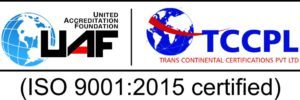- 1. Introduction
- 2. Introduction to SQL
- 3. Basic PHP Development
- 4. Cookies
- 5. Session
- 6. Control Structures
- 7. Disk Access, I/O,Math and Mail
- 8. Functions
- 9. Working with the File System
- 10. Working with Forms
- 11. AJAX
- 12. Classes and Objects
- The Origin of PHP
- PHP is better than Its alternatives
- Interfaces to External systems
- How PHP works with the Web Server
- Hardware and Software requirements
- What a PHP script looks like
- Saving data for later
- Receiving user input
- Repeating code
- Connecting to the MYSQL
- Selecting a database
- Finding out about errors
- Adding data to a table
- Acquiring the value
- Finding the number of rows
- Inserting data
- Entering and updating data
- Executing multiple queries
- How PHP scripts work
- Basic PHP syntax
- PHP data types
- Displaying type information
- Testing for a specific data type
- Changing type with Set type
- Operators
- Variable manipulation
- Dynamic variables
- String in PHP
- The anatomy of a cookie
- Setting a cookie with PHP
- Deleting a cookie
- Creating session cookie
- Working with the query string
- Creating query string
- What is session
- Starting a session
- Working with session variables
- Destroying session
- Passing session Ids
- Encoding and decoding session variables
- The if statement
- Using the else clause with if statement
- The switch statement
- Using the? Operator
- the while statement
- the do while statement
- The for statement
- Breaking out of loops
- Nesting loops
- Summary
- HTTP connections
- Writing to the browser
- Getting input from forms
- Output buffering
- Session handling
- Regular expression
- Common math
- Random numbers
- File upload
- File download
- Environment variables
- E-mail in PHP
- What a function
- Defining a function
- Returning value from function
- User-defined functions
- Dynamic function calls
- Variable scope
- Accessing variable with the global statement
- Function calls with the static statement
- Setting default values for arguments
- Passing arguments to a function by value
- Passing arguments to a function by reference
- Testing for function existence Arrays
- Single-Dimensional Arrays
- Multidimensional Arrays
- Casting Arrays
- Associative arrays
- Accessing arrays
- Getting the size of an array
- Looping through an array
- Looping through an associative array
- Examining arrays
- Joining arrays
- Sorting arrays
- Sorting an associative array
- Creating and deleting a file
- Reading and writing text files
- Working with directories in PHP
- Checking for existence of file
- Determining file size
- Opening a file for writing, reading, or appending
- Writing Data to the file
- Reading characters
- Practical application of cake PHP framework
- Forms
- Super global variables
- The server array
- A script to acquire user input
- Importing user input
- Accessing user input
- Combine HTML and PHP code
- Using hidden fields
- Redirecting the user
- File upload and scripts
- Introduction to AJAX
- Introduction to XML Http Request Object
- Method and Properties of XML Http Request
- Application of AJAX in web application
- Objects oriented programming
- Define a class
- An Object
- Creating an object
- Object properties
- Object methods
- Object constructors and destructors
- Class constants
- Class inheritance
- Abstract classes and methods
- Object serialization
- Checking for class and method existence
- Exceptions
- Summary
What is PHP?
- PHP Hypertext preprocessor is a general-purpose server-side scripting language originally designed for web development to make dynamic web pages. PHP is a powerful tool for making dynamic and interactive Web pages.
- PHP is open source code ,free to download .
What are the Pre-requisites to learn PHP ?
Basic Knowldge of the following languages:
- HTML
- Java script
- XHTML
What is a PHP File ?
- PHP files have a file extension of “.php”, “.php3”, or “.phtml”
- PHP file can have images,text,HTML tags.
Why use PHP for developing website?
- Simple to learn, use and powerfull.
- Php run on many platform (window,Linux etc)
- Many open source project are avaliable that can be use or modify.
Where to Start?
- To start with PHP
- Intstall Web Server (Apache).
- Intstall PHP
- Install Mysql
- Download PHP for free here: http://www.php.net/downloads.php
- Download MySQL for free here: http://www.mysql.com/downloads/index.html
- Download Apache for free here: http://httpd.apache.org/download.cgi
- Download a nice text editor [Not required]
- http://www.editplus.com/download.html
Most people would prefer to install a all-in-one solution:
WampServer for Windows platform or Linux Includes :
– Apache
– MySQL
– PHP


